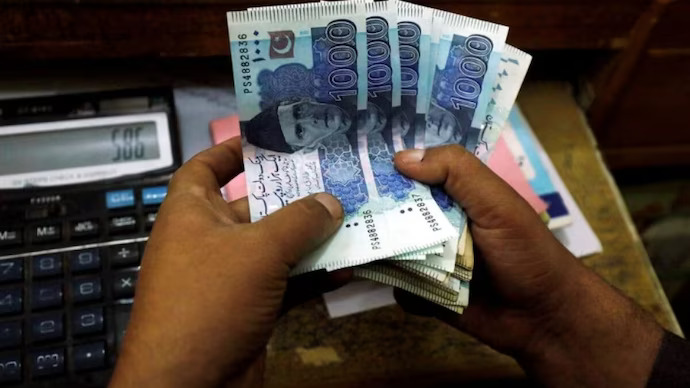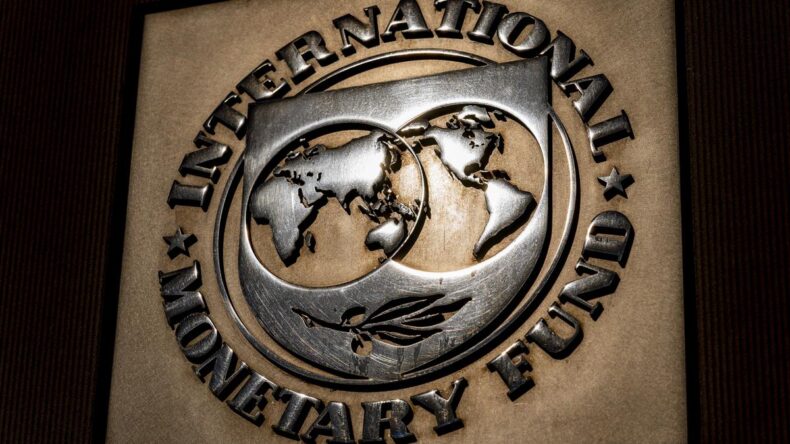Heavily indebted Pakistan is expected to get a new loan of USD 3 billion during the next nine months, making it the fourth-largest IMF borrower globally.
This is a result of a standby agreement reached with the foreign lender to solve the nation’s economic difficulties.

According to data, Pakistan was ranked fifth on the list of nations with the largest borrowing from the International Monetary Fund (IMF) on March 31, 2024.
Pakistan is undergoing its worst economic crisis since gaining independence from Britain in 1947.
When Pakistan receives an additional $3 billion over the following nine months as part of the Stand-By Arrangement it signed with the global lender with headquarters in Washington on Thursday, it will rise to the fourth spot on this list, though.
Pakistan is anticipated to move up to fourth place on the list of biggest IMF debtors despite its continued financial difficulties.
This shift will occur after the country obtains an additional $3 billion through the Stand-By Arrangement that was just established with the international lender with headquarters in Washington.
The agreement follows an eight-month delay and still requires board approval from the IMF.
Prior to this, Argentina held the top slot in terms of IMF loans with $46 billion, followed by Egypt ($18 billion), Ukraine ($12.2 billion), Ecuador ($8.2 billion), Pakistan ($7.4 billion), and Argentina ($46 billion).
Pakistan will surpass Ecuador to become the IMF’s fourth-largest borrower in the world with loans totaling USD 10.4 billion.
Due to domestic problems and the fallout from the war in Ukraine, cash-strapped Pakistan is currently experiencing a severe balance of payments crisis.
The IMF’s top 10 debtors, which include Pakistan, still make up the lion’s share of the outstanding balance of USD 155 billion despite the fact that 93 nations collectively owe it money.
According to the research, Pakistan also enjoys the “title” of being the biggest IMF borrower in the Asian area.
Pakistan’s Excessive IMF Loans Spark Concerns
In comparison to other Asian countries such as Sri Lanka, Nepal, Uzbekistan, the Kyrgyz Republic, Armenia (West Asia), and Mongolia.
Pakistan has gotten a disproportionately greater number of IMF loans than any other country.
Pakistan’s borrowing from the global lender surpasses that of these countries by a significant margin.

IMF figures show that as of March 31 of this year, the international lender has provided loans totaling USD 155 billion or USD 115.2 billion in special drawing rights (SDRs) to help weak economies and balance the global financial system.
Utilizing IMF statistics on the SDR’s value on March 31, this year, which was USD 1.345, this dollar amount was determined.
The SDR serves as the global lender’s unit of account for calculating the value of the assistance provided to its member nations.
As part of a USD 6.5 billion program established in July 2019, the IMF granted Pakistan USD 1.1 billion in August 2022.
According to the research, just 19 IMF member countries have debts of USD 1 billion or more.
Pakistan Urged Towards Sustainable Development Path
The high ranking of Pakistan among IMF borrowers emphasizes the necessity of placing a strong priority on sustainable development in order to escape the debt trap.
The emphasis should be on putting policies into place that contribute to the nation’s long-term economic stability and growth rather than celebrating loan approvals.
According to reports, Pakistan should go in this direction by implementing a comprehensive plan.
Pakistan will get more money under the SBA program than anticipated—3 billion USD over nine months.
The final USD 2.5 billion of a USD 6.5 billion rescue package that was agreed in 2019 was due to be released; however, that package expired on June 30.
Due to unbridled inflation, Pakistan’s economy has been in a free-fall mode for many years, putting immense pressure on the underprivileged masses and making it nearly impossible for a large number of people to make ends meet.
It has recently encountered a number of difficulties, such as the severe floods from a year ago and the increases in commodity prices brought on by the conflict in Ukraine.
In Pakistan’s floods last year, which wiped away vast tracts of agriculture, wrecked millions of homes, and resulted in billions of dollars in economic damages, over 1,500 people perished.













